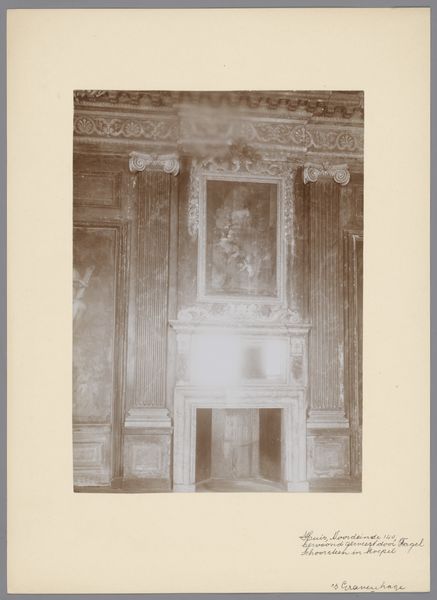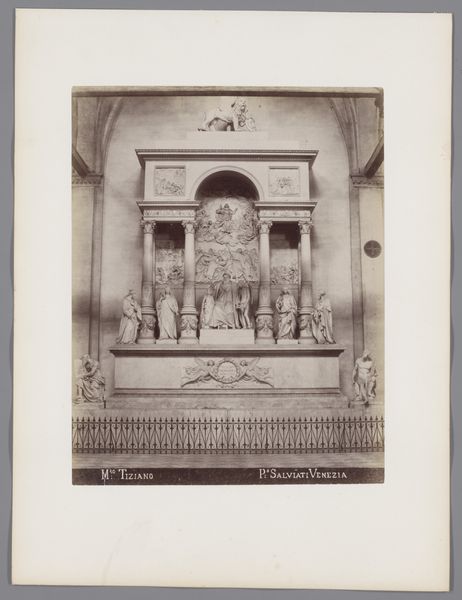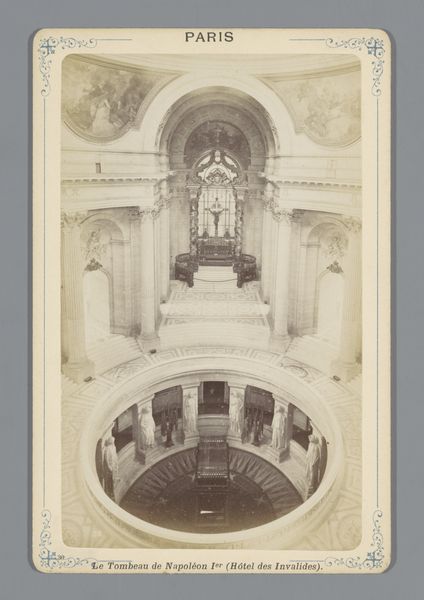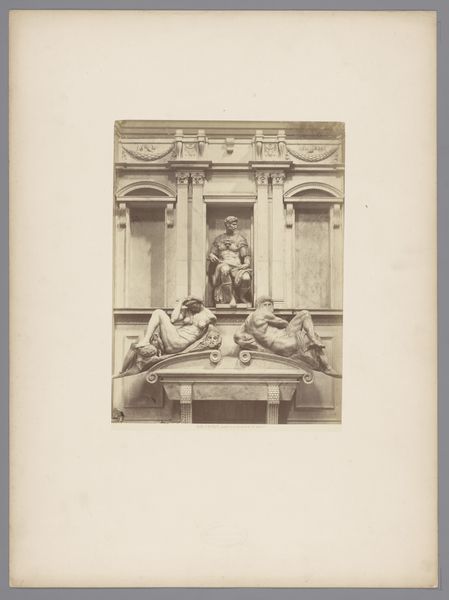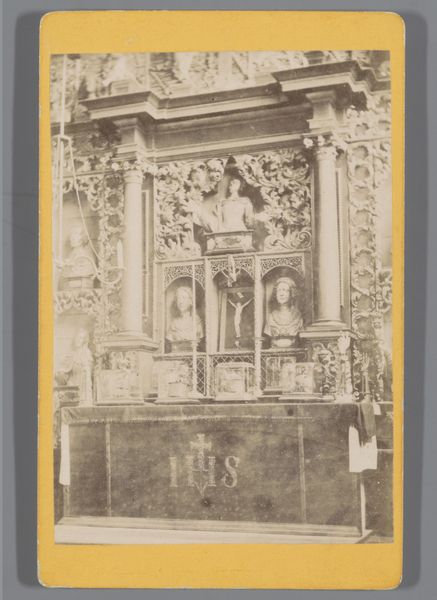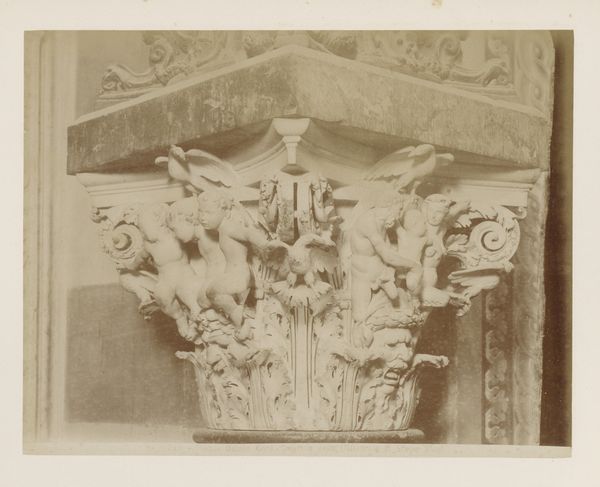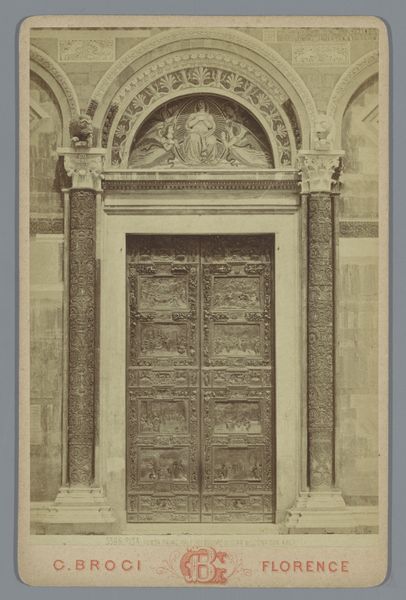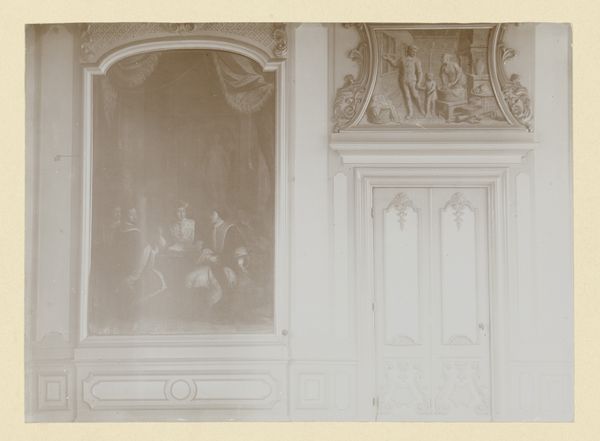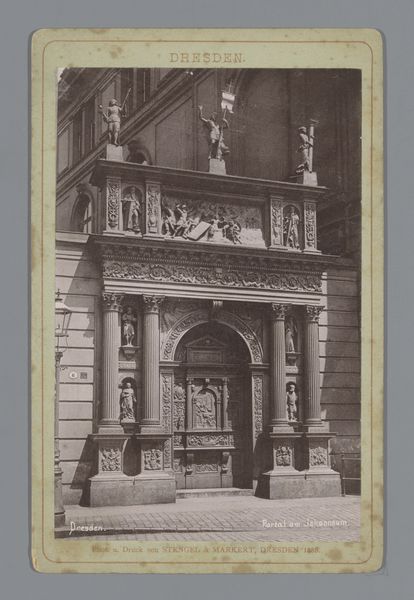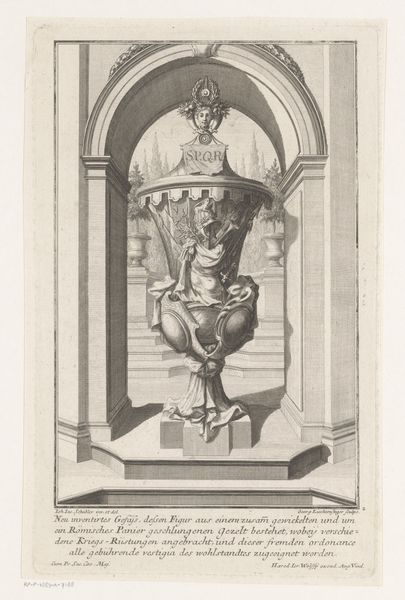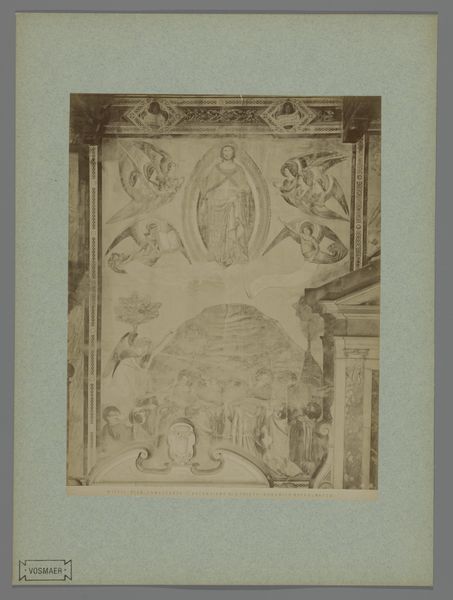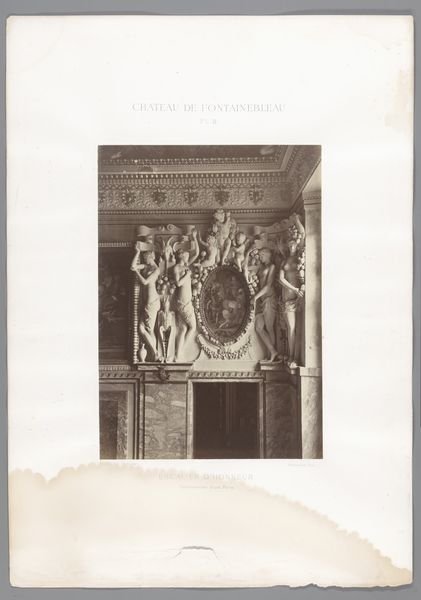
Grafmonument voor Titiaan in de Santa Maria Gloriosa dei Frari te Venetië 1852 - 1893
0:00
0:00
print, photography, sculpture, gelatin-silver-print, marble
#
portrait
# print
#
photography
#
sculpture
#
gelatin-silver-print
#
history-painting
#
marble
Dimensions: height 440 mm, width 306 mm
Copyright: Rijks Museum: Open Domain
Editor: We’re looking at a photograph taken by Carlo Ponti between 1852 and 1893. It depicts the Tomb of Titian, a striking marble monument inside the Santa Maria Gloriosa dei Frari in Venice. What stands out to me is the almost overwhelming amount of sculptural detail; it fills every available space. How do you read this image through a Formalist lens? Curator: Primarily, I observe the photographer's rigorous engagement with form and the interplay of light and shadow to articulate the monument's structure. Notice how Ponti frames the tomb, allowing its classical architecture – the columns, the arch – to define the visual field. He creates depth through the careful placement of figures, both in the round and in relief. Editor: The textures also seem significant. The smooth marble contrasts with the finer details of the sculptures and the fence in front. Curator: Precisely. The texture operates as a key element in the composition. Ponti’s photograph, being a gelatin-silver print, further enhances this through its tonal range, offering a study in contrasting forms and the geometry evident in every plane, and delineates mass from void. The photograph creates its own formal narrative independent of its subject. Consider how the symmetry draws the eye upwards and towards the lion perched at the very top. Editor: So, even though it represents a historical object, the photograph itself can be understood primarily through its visual components? Curator: Indeed. The photograph operates as a formal construction; it presents to us a balanced study in light, shadow, and form. The skill and care with which the elements in this print converge provide insights into Ponti’s deliberate control and artistic sensitivity. Editor: This focus on formal elements certainly gives me a different way to approach photography of sculpture. Curator: Quite. Formal analysis allows us to examine a photograph or sculpture’s pure visual aesthetics as a conduit to experiencing the artistic method employed, and artistic value inherent within.
Comments
No comments
Be the first to comment and join the conversation on the ultimate creative platform.
